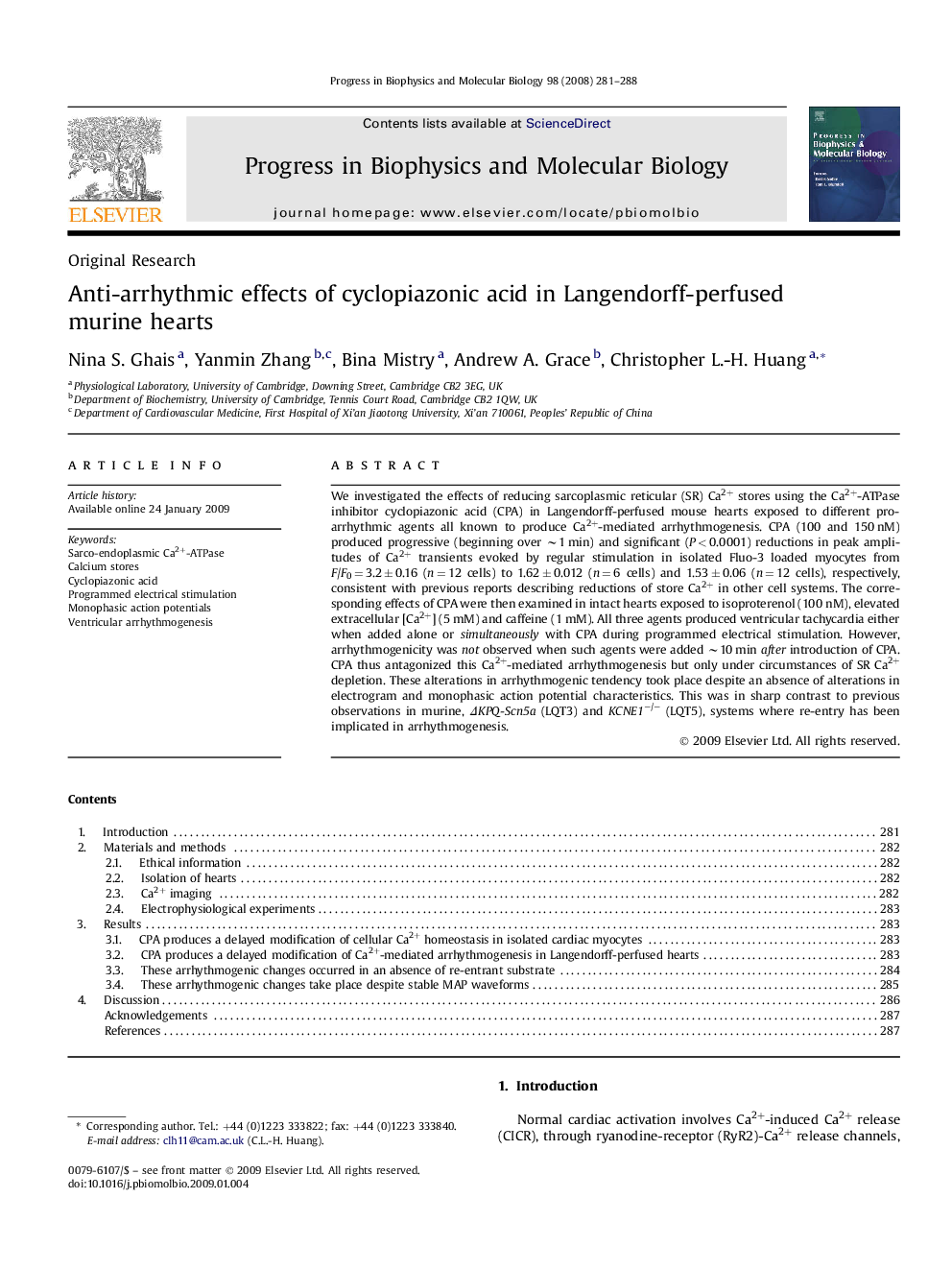| Article ID | Journal | Published Year | Pages | File Type |
|---|---|---|---|---|
| 8401804 | Progress in Biophysics and Molecular Biology | 2008 | 8 Pages |
Abstract
We investigated the effects of reducing sarcoplasmic reticular (SR) Ca2+ stores using the Ca2+-ATPase inhibitor cyclopiazonic acid (CPA) in Langendorff-perfused mouse hearts exposed to different pro-arrhythmic agents all known to produce Ca2+-mediated arrhythmogenesis. CPA (100 and 150 nM) produced progressive (beginning over â¼1 min) and significant (P < 0.0001) reductions in peak amplitudes of Ca2+ transients evoked by regular stimulation in isolated Fluo-3 loaded myocytes from F/F0 = 3.2 ± 0.16 (n = 12 cells) to 1.62 ± 0.012 (n = 6 cells) and 1.53 ± 0.06 (n = 12 cells), respectively, consistent with previous reports describing reductions of store Ca2+ in other cell systems. The corresponding effects of CPA were then examined in intact hearts exposed to isoproterenol (100 nM), elevated extracellular [Ca2+] (5 mM) and caffeine (1 mM). All three agents produced ventricular tachycardia either when added alone or simultaneously with CPA during programmed electrical stimulation. However, arrhythmogenicity was not observed when such agents were added â¼10 min after introduction of CPA. CPA thus antagonized this Ca2+-mediated arrhythmogenesis but only under circumstances of SR Ca2+ depletion. These alterations in arrhythmogenic tendency took place despite an absence of alterations in electrogram and monophasic action potential characteristics. This was in sharp contrast to previous observations in murine, ÎKPQ-Scn5a (LQT3) and KCNE1â/â (LQT5), systems where re-entry has been implicated in arrhythmogenesis.
Keywords
Related Topics
Life Sciences
Biochemistry, Genetics and Molecular Biology
Biophysics
Authors
Nina S. Ghais, Yanmin Zhang, Bina Mistry, Andrew A. Grace, Christopher L.-H. Huang,
